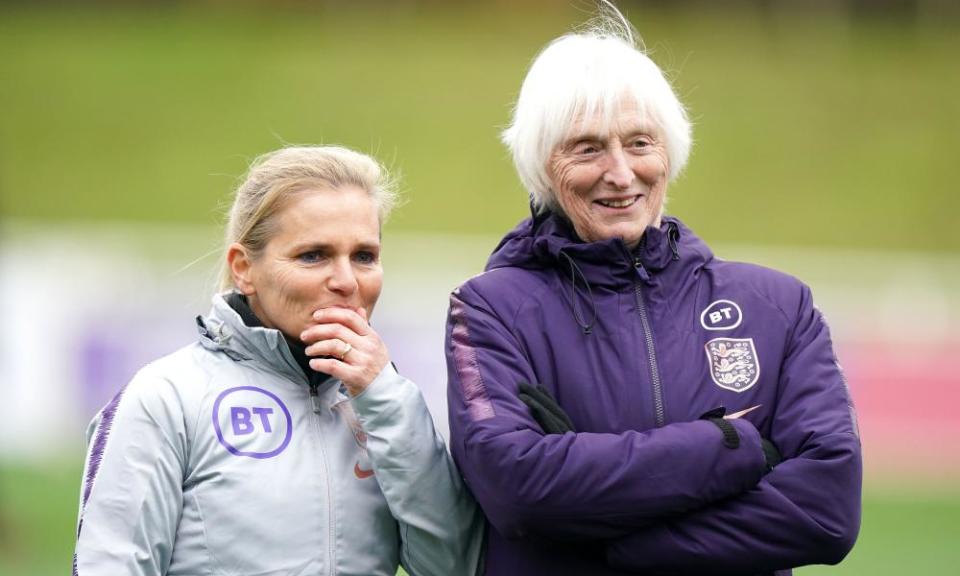WSL plan to become fully independent offers promise but comes with risks
The Women’s Super League and Championship are on the verge of loosening relations with the Football Association on the way to becoming fully independent, with a new company – NewCo – being launched at the end of the year to handle the running of two leagues. In many ways it is a move that makes sense; the FA is a not-for-profit body, there to govern the game, not built to run the leagues day-to-day. It is responsible for the entire footballing ecosystem in England and is unable to continually up investment in the development of the women’s game when it has other commitments such as disability football and the grassroots game.
The ambition for the WSL specifically, as stated by its chair, Dawn Airey, is to build the first billion-pound women’s league in the world. In many respects that is an attractive ambition; the women’s game has been historically underfunded and undervalued and a billion-pound league would mark a decisive break with the past. But what exactly would that look like?
Related: WSL can be first billion-pound women’s football league in the world, says chair
“We’re acutely aware of the lessons from the Premier League and EFL [English Football League],” Airey said when this was put to her directly. “There is a current split, with the current revenues that go to Championship and the Super League [25% and 75%] and there is absolutely no reason as to why that split shouldn’t continue. It’s two leagues and the Super League clubs are very conscious that the Championship needs to thrive as well.”
That’s all well and good but there is no escaping that while the Championship is included alongside the WSL, which contrasts with the Premier League’s breakaway, a 75-25% revenue split favouring the WSL for the foreseeable future builds in an ever widening gap between those leagues. Is there scope, then, for that split to level out, or even tilt the other way to ensure that the Championship is able to catch up to the level of the WSL? The FA’s director of women’s football, Sue Campbell, insisted she is sure that will be discussed, but approximately three months out from the launch of the NewCo, is that really good enough?
According to Airey: “The whole of women’s sport globally gets a billion dollars in revenues, from sponsorship and gate. Men’s sport gets half a trillion. That’s an enormous difference and it shows the enormous potential for women’s sport, and women’s football in particular.” True. But is all that money sloshing around in football good for the game and for society generally? Should the ambition be to target the levels of revenue in the men’s game when the men’s game is widely believed to be financially bloated and unsustainable? Arguably, no.
There is a world in which it would be feasible to see it as a good thing if there was proper reinvestment back into the game at all levels, equitably into the club game and with a big chunk going back into the grassroots and communities, using the game for the benefit of wider society. But that level of commitment to the pyramid and grassroots is unlikely.
Let’s be frank, a 25% revenue split for the Championship is not enough and as long as the top-flight is disproportionately favoured financially then there will be a growing gap. There is at least an opportunity to put in place safeguards that ensures that doesn’t happen by agreeing that once the infrastructure in the WSL is up to scratch, the numbers start to shift in favour of the lower divisions.
Equally, once the clubs are in charge of the leagues it is inevitable the dynamics will change. Yes, they may be on board with a collaborative effort to support the ecosystem now but when big money comes into play individual interests will rear their heads without preventative checks written into the foundation of the NewCo.

Campbell hinted at one of the possible funding decisions for the WSL when she discussed the need for cost controls to keep it viable as an investable proposition. She talked about clubs not doing “what they do day in and day out in the men’s game” and said they would be “putting all their assets into a pot in the middle”. This is a big commitment and, if true, that is a significant step forward, but where that money is distributed to is really what matters. Yes, there will be some significant costs involved in elevating the two divisions and growing the sponsorship and broadcast investments, but once those have reached a certain level, will the mechanisms be in place to re-evaluate where the money in the game should be going?
Another risk is an increased interest in women’s sport from sovereign-state wealth funds. Newcastle United, for instance, is 80% owned by Saudi Arabia’s Public Investment Fund and, via that, the club’s women’s team has received substantial investment. That is great but somewhat jars with the oppressive restrictions of women’s rights in Saudi Arabia.
“I don’t want to get drawn too far into that [issue],” Campbell said. “But certainly, we will be very careful of who our commercial partners are going forward for the women’s game. I can guarantee you that.”
Navigating all these issues will be no small feat and, in that regard, giving chief executives and other high-ranking officials from clubs that operate in a world where is profit is king the power to guide and decide the future of the women’s professional game in England feels misjudged, no matter how well intentioned they may be about building a sustainable footballing ecosystem that benefits all.

 Yahoo Sport
Yahoo Sport 



































































